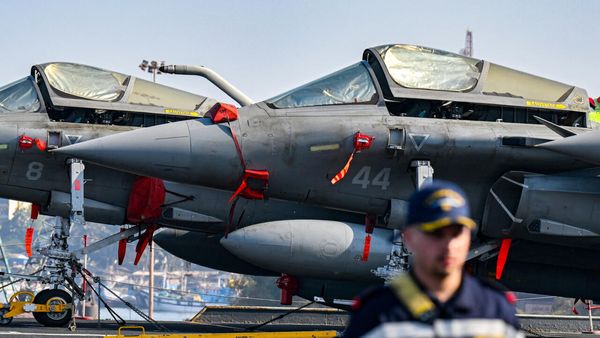
Melbourne, Australia – Myanmar’s remote jungle hills may be a world away from sun-soaked Australia, but the two countries share an insidious bond – crystalline methamphetamine.
Otherwise known as “ice” or “crystal meth”, crystalline methamphetamine is a highly addictive substance which has permeated Australia’s suburbs.
The Australian Federal Police estimates about 70 percent of the drug comes from northeastern Myanmar, near the Golden Triangle, where the country borders Thailand and Laos, and is transported through Southeast Asia before arriving in Australia by boat.
A recent National Drug Strategy survey showed that one out of every 100 Australians over the age of 14 had used ice in the last 12 months, mostly in the country’s major cities.
The same survey also indicated that about 7.5 percent of Australia’s population had tried methamphetamine during their lifetime.
Charlie Samson, who lives in Australia’s second-biggest city, Melbourne, first smoked ice when he was just 18. He soon found himself addicted.
“We’d go out for drinks, and someone knew a bloke who had some ice. And so we all tried it,” he told Al Jazeera.
“The next week, we did the same thing, and then it snowballed from there. Fast forward three or four months, I was secretly buying it on a Monday, because I’d been up all weekend.”

At the peak of his addiction, he was spending 2,500 Australian dollars ($1,690) a week on the drug. Despite his habit, Samson managed to maintain his well-paid construction job with the vast majority of his salary going on the drug.
“Before I rolled out of bed, I used to have to smoke about a gramme just to be able to function,” he said.
‘Smelled like tea’
Australia’s official health campaigns often declare ice users to be “psychotic” and “violent”, underscoring the prevailing stereotype of the homeless “meth addict”.
However, Samson told Al Jazeera that ice addiction could affect anyone and that people could remain apparently functioning members of society even when addicted.
He said he had seen lawyers and businesspeople all fall prey to the drug.
“I’ve met a few people who I thought, ‘He’s got a family, he’s paying a mortgage. And now he’s got nothing.’ Because at some point, it gets a hold of you, even if it’s not financially, it’ll get you mentally,” he said.
Samson, who is now 29, managed to hold down his job for six years before the addiction completely overran his life, and it was only after a short stint in prison that he managed to get clean.
While Samson told Al Jazeera he never knew the source of the ice he bought, he did recall batches that “smelled like tea”, indicative of methamphetamine originating from Myanmar, which is often smuggled in tea boxes.
The production of methamphetamine and heroin has increased in Myanmar since the 2021 military coup plunged the country into crisis and civil war, with the United Nations Office on Drugs and Crime (UNODC) saying that seizures of methamphetamine hit a record 190 tonnes in 2023 across East and Southeast Asia.
The UNODC says that Myanmar has also emerged as the world’s leading source of opium.
Most of the drug production is centred in the northern hills of Shan and Wa states, regions which have long been notorious for opium production and trade.
But the civil war has seen a spike in the drug trade, including heroin, methamphetamine and what is known as yaba – small pills containing a mix of methamphetamine and caffeine – with the proceeds used to finance the conflict.
The Australian Federal Police, which maintains ongoing operations in the region as part of efforts to stem the flow of drugs to Australia, told Al Jazeera that “transnational crime is not only a result of, but a driver of the current conflict, as it is financing various actors in the conflict and, therefore, reducing the incentive to pursue a durable peace.”
“Like heroin historically, methamphetamine production remains a significant source of income to transnational crime groups in Myanmar,” a spokesperson said. “Ongoing offshore seizures of drugs from Myanmar show this region remains a major source to the lucrative Australian market.”

Between 2012 and 2022, almost 10 tonnes of ‘tea packet’ methamphetamine was seized by the Australian Federal Police. In 2022 alone, this included more than 2.1 tonnes with a street value of more than 1 billion Australian dollars ($671.6 million).
‘Tea packet’ methamphetamine refers to methamphetamine manufactured in Southeast Asia and commonly packaged in branded tea packets for concealment and marketing purposes; different colours indicate purity, with green being the highest.
While the likely origin is Myanmar, the police told Al Jazeera it was “difficult to put a percentage on the amount of methamphetamine originating from Myanmar, as it is transhipped through multiple countries, concealing the true source of the illicit drugs”.
Increasingly potent
Samson has remained clean since leaving prison in June 2023.
But many other Australians are unable to break ice addiction and struggle even to take the first step of seeking help.
Turning Point is a Melbourne-based clinic whose services include assistance for those seeking help for methamphetamine use, including counselling and detox.
Clinical Director Shalini Arunogiri echoes Samson’s observations that methamphetamine addiction affects a variety of Australians.
“We see people who may fit that homeless stereotype,” she told Al Jazeera. “But we absolutely do see people who are working full time. We see parents. We see people who are in high functioning jobs who might be using daily.”
She added that the stigma of methamphetamine addiction is often a barrier to those seeking help.
“I think there is that real stereotype that has been portrayed in media, advertising and in public health campaigns. Those public health campaigns aren’t effective. In fact, they marginalise people who use that drug even more.”

Arunogiri says the purity of methamphetamine coming from high-volume trade regions such as Myanmar has increased over the last two decades.
“The drug that we have available in Australia for the last decade is quite potent – we’ve got very high potency crystalline methamphetamine. Here, it’s virtually impossible to get non-crystalline methamphetamine.”
She told Al Jazeera that the effects of the drug can be seen across a range of physical, mental and criminological indicators.
“One in three people who use at least every week are likely to experience psychotic symptoms – seeing things, hearing things. We know that a significant proportion go on to develop things like schizophrenia and long-term psychological illnesses. Using methamphetamine also often comes with criminal aspects as well.”
The Australian Institute of Health and Wellbeing recently reported that at least 46 percent of those entering prison had used methamphetamine in the previous 12 months.
John Coyne, Head of Strategic Policing and Law Enforcement at the Australian Strategic Policy Institute, told Al Jazeera that methamphetamine use in Australia “fuels a cycle of criminal activity that often leads to incarceration”.
He says this includes theft and robbery to fund addiction, as well as violent behaviour, which can be triggered by the drug.
“Additionally, the illegal nature of meth means that possession and trafficking come with harsh penalties, further contributing to incarceration rates,” he said.
Coyne says the ongoing conflict in Myanmar, along with endemic corruption and human rights abuses by the military regime, creates serious challenges for Australian police in tackling the export of drugs from the region.
“While disrupting illicit drug routes is essential for regional security, engaging with a regime known for its oppressive tactics raises ethical and legal concerns,” he said.
According to the United Nations, the Myanmar military has killed more than 5,000 civilians since the coup and has reinstated the death penalty for political activity, executing pro-democracy activists.
That the regime is also allegedly directly involved in the drug trade presents a myriad of operational and ethical challenges for Australian law enforcement.
“The Australian Federal Police must navigate these complexities carefully, ensuring that intelligence-sharing is strictly focused on disrupting drug networks without inadvertently supporting a corrupt regime,” Coyne told Al Jazeera.
“This delicate balance is crucial to uphold international norms and prevent complicity in the junta’s ongoing human rights violations.”







